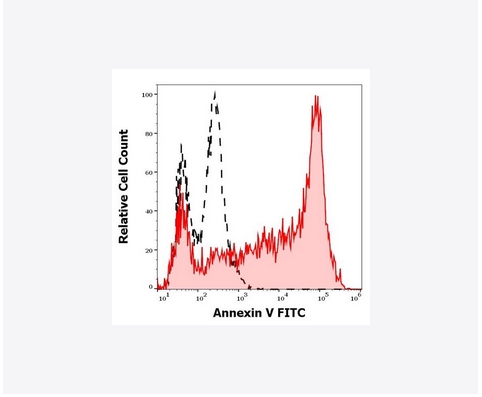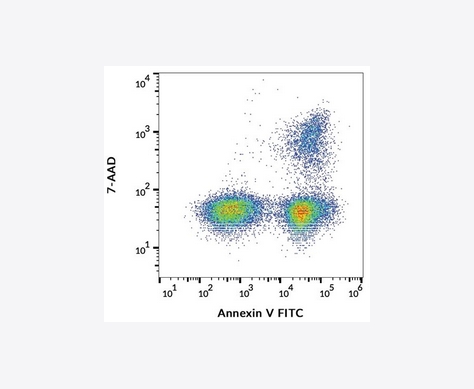Blog Post
Apoptosis and the Role of Annexin and 7-AAD: A Simplified Guide
The dance of life and death within our cells, often referred to as apoptosis, is beautifully intricate. In apoptosis research, tools like Annexin and 7-AAD stand out due to their ability to provide crucial insights into this cellular process. Let’s demystify the world of apoptosis and understand how Annexin and 7-AAD play their roles.
Decoding Apoptosis
Apoptosis is essentially programmed cell death, a self-destruct sequence that cells undergo. This isn’t a random event but rather a necessary process to maintain balance and health within organisms. It eliminates harmful, aged, or unnecessary cells, paving the way for new ones.
Why Monitor Apoptosis?
- Disease Prevention: Dysregulation in apoptosis can lead to conditions like cancer.
- Development: It shapes body structures during development.
- Tissue Health: Apoptosis maintains cell population balance.


Enter Annexin and 7-AAD
In the realm of apoptosis research, knowing which cells are alive, which are in the process of dying, and which have already died is crucial. This is where Annexin and 7-AAD come in.
Annexin V:
This protein has a high affinity for phosphatidylserine, a molecule that gets flipped from the inside to the outside of the cell membrane during early apoptosis. By binding to this molecule, Annexin V acts as a marker for cells that are in the early stages of apoptosis.
7-AAD (7-Aminoactinomycin D):
7-AAD is a dye that binds to DNA. Importantly, it can only access the DNA of cells that have compromised cell membranes – a characteristic of late-stage apoptosis or necrosis. Thus, 7-AAD is great for identifying cells that are at the end of the apoptosis process or already dead.
Using Annexin and 7-AAD Together
Benefits of Dual Staining:
- Comprehensive Analysis: By using both, researchers can identify cells in various stages of apoptosis.
- Accuracy: This combination reduces chances of false positives or negatives.
- Efficiency: Streamlines the research process by providing a clearer picture in a single experiment.
Conclusion
Apoptosis is a complex dance, but with tools like Annexin and 7-AAD, scientists can gain clearer insights into the intricacies of cell death. By understanding and monitoring apoptosis, we’re better equipped to tackle diseases, understand development, and promote overall organism health.

